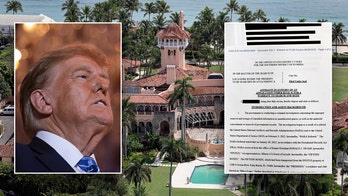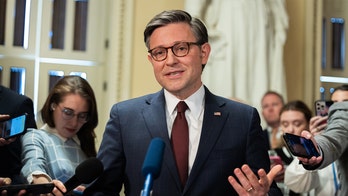Trump: Utah's land should not be controlled by Washington
President announces proclamations to modify national monument designations of Bears Ears and Grand Staircase-Escalante.
Capping months of speculation, President Trump on Monday signed a pair of executive orders to significantly shrink two of Utah’s national monuments – Bears Ears and the Grand Staircase-Escalante – that were created by his Democratic predecessors.
The controversial move was pitched by Trump as a win for states' rights and follows an April review conducted by Interior Secretary Ryan Zinke on the boundaries of large national monuments. The review initially looked at more than two dozen sites designated by presidential decree since the 1990s.
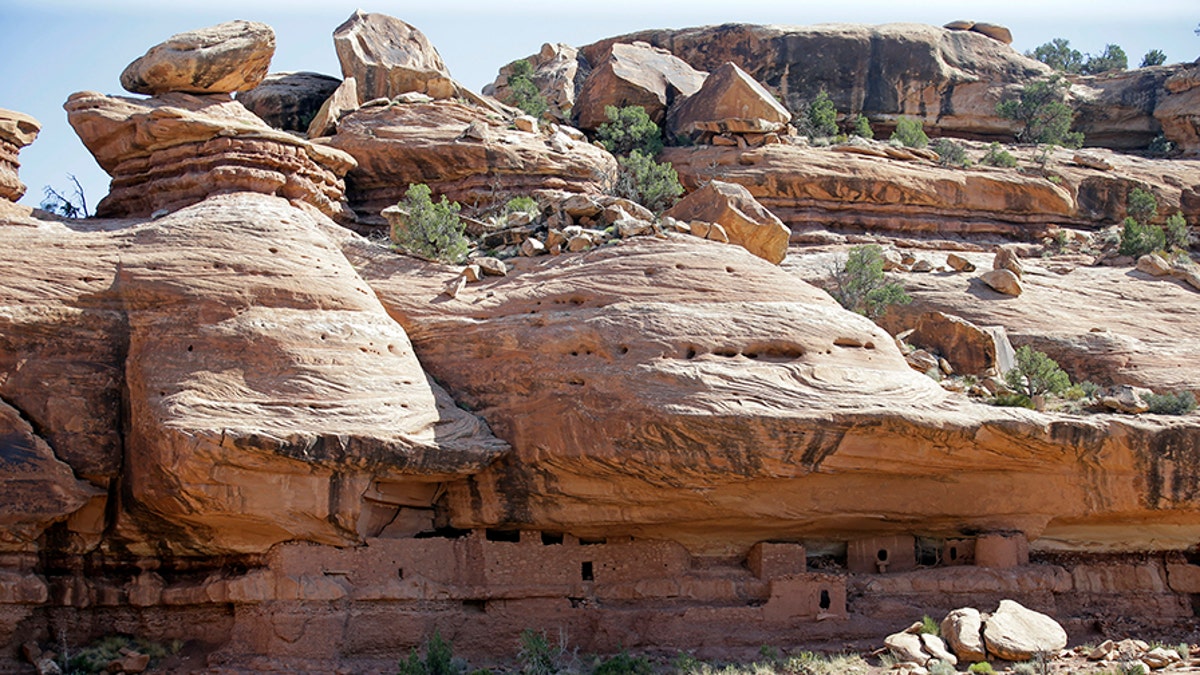
The "Moonhouse" in McLoyd Canyon which is part of Bears Ears National Monument, near Blanding, Utah. (AP Photo/Rick Bowmer)
“I know you love this land the best and you know how to protect it and you know how to conserve this land for many, many generations to come,” Trump told a group of people at Utah’s Capitol in Salt Lake City. “They don’t know your land. They don’t care for your land like you do.”
Trump’s presidential proclamations cut Bears Ears by 85 percent and Grand Staircase-Escalante in half. The action is also likely to trigger a legal battle that could alter the government’s approach to conservation.
Utah’s congressional and state leaders lobbied the president to reduce the size of the monuments so the state would have more control on what can be done on the land.
Republican Sen. Orrin Hatch of Utah praised the announcement and said Trump was giving the people of Utah “a voice in the process.”
Zinke maintained Monday that the move should be seen as correcting an overreach by the federal government.
“We’re not taking one square inch of federal land and transferring it or selling it. It is still federal land, with all the protections of federal land,” Zinke said, adding that the biggest change is that the government is “allowing greater use on the areas that were previously in the monument.”
Opponents, however, see it as the latest example of the government breaking promises to Native American tribes and eroding protections for public land.
In 2016, former President Barack Obama proclaimed Bears Ears a national monument dedicated to Native American culture.
Former Interior Secretary Sally Jewell, who was instrumental in designating Bears Ears monument, tweeted Trump’s actions “will make him the most anti-conservation president in our history. He will be challenged by tribes and thoughtful citizens that recognize that some places are too special to develop.”
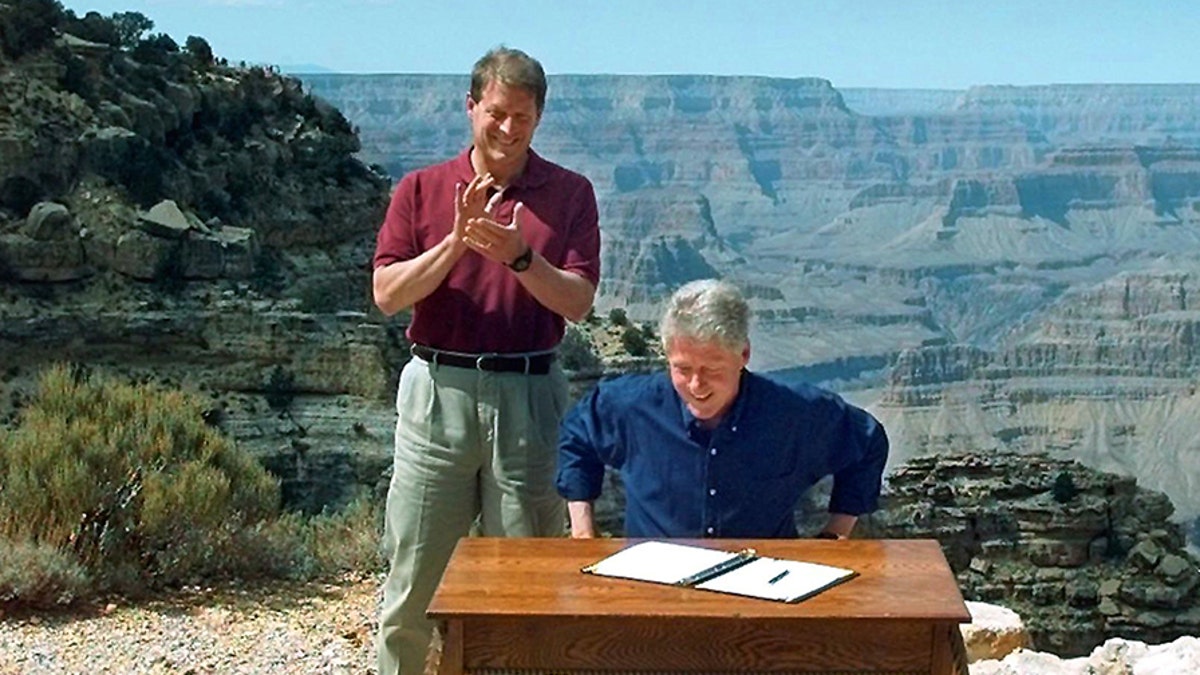
Vice President Al Gore applauds after President Bill Clinton signs a bill designating about 1.7 million acres of land in southern Utah's red-rock cliff as the Grand Staircase-Escalante National Monument, at the Grand Canyon National Park, in Arizona In this Sept. 18, 1996. (AP Photo/Doug Mills, File)
Former President Bill Clinton designated the Grand Staircase-Escalante monument.
About 2,000 people lined up near Utah’s capitol on Monday, holding signs like “Keep your tiny hands off our public lands” and chanting “lock him up!” at Trump.

Protesters line up outside of Utah's capitol. President Trump signed a pair of executive orders to significantly shrink two of Utah’s national monuments. (Kelly Burke, Fox News)
There were also protests held over the weekend at Utah’s snowy capital.
“I think it’s important to have natural places that are untouched and not modified,” demonstrator Valerie Huitzul told Fox News.
Huitzul was among the 5,000 protesters who showed up over the weekend.
The decision to shrink the state’s sprawling wilderness shrines has prompted fierce backlash by environmental groups as well.
Ahead of Monday’s visit, 146 scientists, researchers and academic organizations from 19 states sent a letter to the Trump administration calling the Grand Staircase-Escalante National Monument “an important living laboratory” to scientific research.
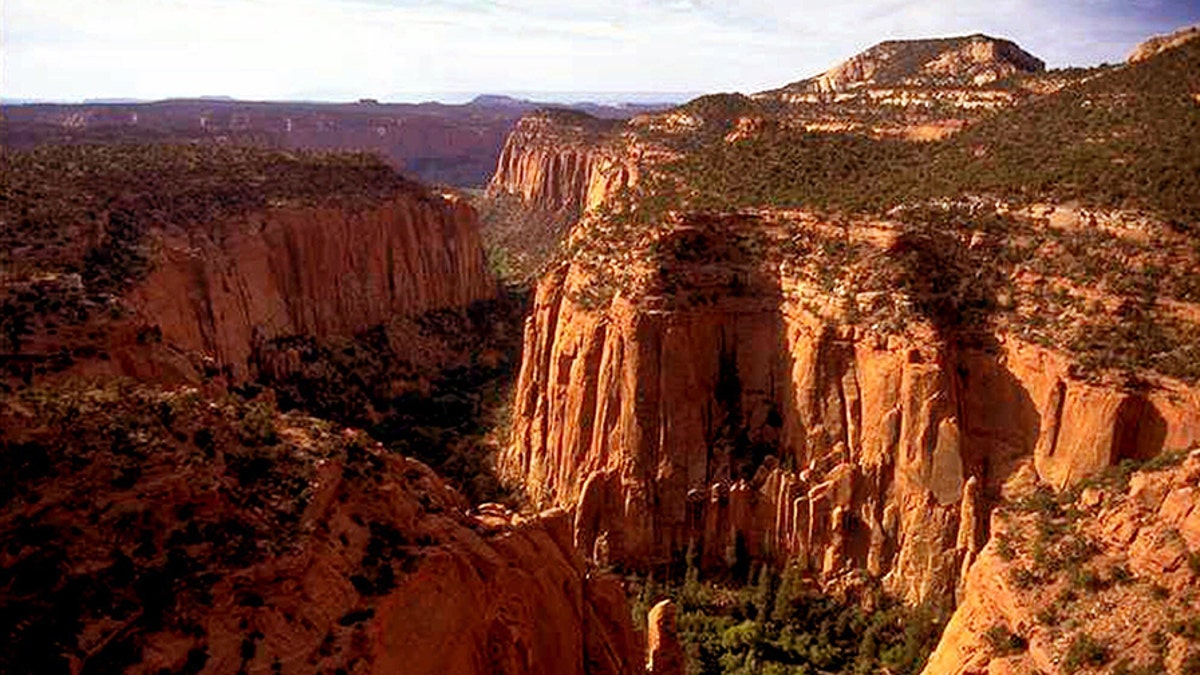
he Upper Gulch section of the Escalante Canyons within Utah's Grand Staircase-Escalante National Monument features sheer sandstone walls, broken occasionally by tributary canyons. (AP Photo/Douglas C. Pizac)
The Center for Western Priorities described Monday’s event as the largest rollback of protections for lands and wildlife in U.S. history.
Arnold Miller, president of the Paleontological Society and Senior Associate Dean and Professor of Geology at the University of Cincinnati, said the Grand Staircase-Escalante “contains a trove of scientifically-valuable fossils and strata from boundary to boundary, and the excising of portions of this national monument for mining or other commercial activities will tragically compromise its integrity.”
Trump said Monday while leaving the White House that the monument announcement is "something that the state of Utah and others have wanted to be done for many, many years." He said it is "so important for states' rights and so important for the people of Utah."
In December, shortly before leaving office, Obama irritated Utah Republicans by creating the Bears Ears National Monument on land sacred to Native Americans.
Trump signed an executive order in April directing Zinke to review the protections. Trump is able to upend the protections under the 1906 Antiquities Act, which gives the president broad authority to declare federal lands as monuments and restrict their use.
Trump said at the time that he had spoken to state and local leaders "who are gravely concerned about this massive federal land grab. And it's gotten worse and worse and worse, and now we're going to free it up, which is what should have happened in the first place. This should never have happened."
The move marks the first time in a half century that a president has undone these types of land protections. And it could be the first of many changes to come.
Zinke has also recommended that Nevada's Gold Butte and Oregon's Cascade-Siskiyou monuments be reduced in size, though details remain unclear. The former Montana congressman's plan would allow logging at a newly designated monument in Maine and more grazing, hunting and fishing at two sites in New Mexico.
Fox News' Dan Springer and The Associated Press contributed to this report.


